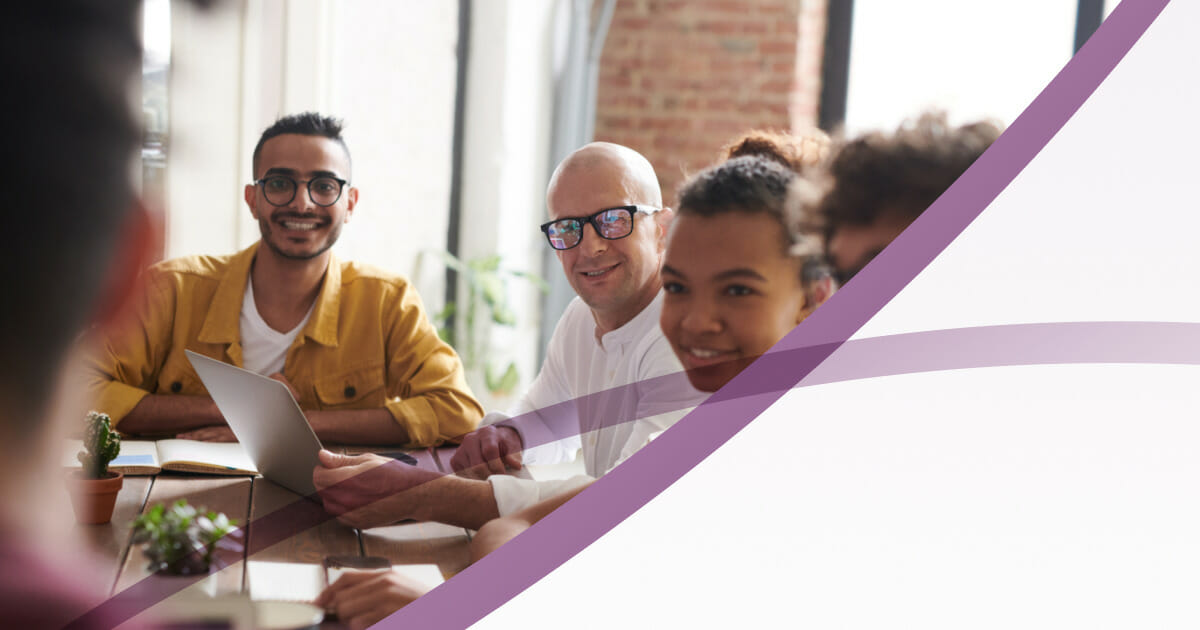Work takes up a huge chunk of our lives. Your team can either spend it watching the clock – eight hours a day, day in, day out, week after week, year on year. Or they can enjoy those hours.
Obviously, there are going to be parts of working life that aren’t going to be perfect. But hopefully it can be fulfilling and rewarding. The big question that every HR team faces is how you can maximise that, and reduce the minutes spent counting down.
So let’s cover exactly how to do that. But first…
What is employee experience?
Everything your people do at work, from walking through the door on their very first day, to the daily tasks, projects, and business trips, through to the day you leave, make up your employee experience. But it goes further than that. Employee experience is all about how people feel about their work and their employer. So, it’s a mindset thing. A feeling thing. A perception thing. And we know that when something is that broad, a lot of factors come into play. We dive into more details here: What is Employee Experience?
How to improve employee experience in 10 steps
The benefits of employee experience are clear. But improving employee experience can seem like a mammoth task when you’re at the bottom of that mountain looking up. What do you have to do to put one foot in front of the other to get you to the top?
1. Provide a positive work environment
It’s those comfy chairs again. And an office space that works for everyone and is clean, and well-lit. It’s people talking to each other, interacting from the top of the workforce down. It’s team building and it’s respect and politeness.
2. Offer competitive compensation and benefits
Make sure everyone’s wage is fair and all benefits are correctly calculated. To keep good people, you need to look after them. Compensate competitively and offer all the perks like health insurance and attractive retirement plans. And make sure to review compensation and benefits, at the very least, annually. Twice a year would be even better. That way, everyone is consistently rewarded accurately and fairly, and nothing falls behind.
3. Foster professional development
This is where all the training comes in. Learning new skills is a huge morale boost. Encourage your employees to get involved and maximise their talents. They need to join the webinars, conferences and workshops. And you need to invest in their training, too. Whether it’s paying for a single course or a full professional qualification, it goes a long way in showing you care.
4. Encourage work-life balance
Let your teams work to their own schedules where it’s possible. Flexible and remote options are great incentives for employee loyalty and employee wellbeing. Offering remote working to Aidan in accounts when he’s trying to care for his poorly mum might just make all the difference to him right now. The organisation that gives is the organisation that hires stay loyal to. Encourage breaks, be on the alert for signs of burnt out.
5. Recognise and reward good performance
We all want to be seen. And we all want our success to be recognised. Praise and recognition for a job well done is important. And a little bonus, reward or promotion can be the best incentive for great employee contribution and work ethic.
6. Encourage employee feedback
Employee voice is not only hugely empowering to the employee, but also a really useful tool for you. Create opportunities for employees to provide feedback and suggestions. This will help you identify areas for improvement and demonstrate that you value your employees’ input.
7. Foster a culture of trust
Keeping everyone in the loop makes for a good open, honest, atmosphere. Transparency breeds trust. Leaders need to communicate openly about what the future holds, how you’re progressing as an organisation and the wins and roadblocks. That honest style needs to cascade to managers so that every part of your organisation fosters a sense of trust in every employee.
8. Provide a clear career path
Goals are important. We all like to aim for something. Make it clear what the promotions or next steps could be for your employees. More than just seeing the future options and giving people something to strive for, they’ll feel valued and wanted. Everyone wants to feel they’re still on the guest list next week, next month, next year.
9. Embrace diversity and inclusion
Equity, diversity and inclusion (EDI) is absolutely key to employee experience. Everyone comes to work with a different privilege and a different starting point. And we know that inclusivity and equity are qualities you want to foster across your organisation. Ensuring that you’re getting this right is a big piece of work. But HR is the starting point for this. It’s a people thing and you are all about your people. So build D&I into every part of your organisation and demand respect and fairness for all employees from their peers, policies, and customers.
10. Celebrate success
Three cheers for you for wanting to get your employee experience spot on! And a few pats on the back and recognition for your employees won’t go amiss either. Milestones are important, even personal ones, for building a sense of community. So, know your people (that time you spend measuring employee experience is going to help here) and make sure you acknowledge what matters. Professional milestones, and personal moments. 10 years with the organisation. A promotion. Success in a training programme.
How to measure employee experience
You hope you’re getting it right, but how can you be sure that your employee’s experience is what you think it is? Here are a few things that can give you a good indication.
1. Employee surveys
To find out what’s what from the ground up, surveys are a quick way to get a feel for everything you need to know. Monthly pulse surveys are a quick and efficient way of keeping your ear to the ground.
2. Performance reviews and feedback sessions
The best way to know that you’re getting it right is to hear it from the horse’s mouth. Your 1:1 performance review sessions are key and can be very strategic. Take some time to build your feedback system so that those reviews really count.
3. Focus groups
A targeted discussion between 6-12 participants is a useful way to gather information, identify issues or pick up on new trends. Focus groups can be broad – you might want to know how the new HR software is being received, so your focus group can bring in members from across the board. If you’re worried about communication and openness among your sales team, your focus group will be tighter and only include members of that team.
4. Engagement scores
Make your surveys really work for you by adding scoring measures. Employee engagement can be measured. Every question in your survey will have a score or rating and once you calculate these, it’ll give you a great insight into whether you’re ready to celebrate or need to roll up your sleeves and put in some hard graft.
5. Data on absences
This will tell a clear story. When wellbeing, working culture and flexible working policies are in place , and all working well, your people are actually going to want to come into work. Honestly. Check where your absences are coming from, identify any absenteeism. Data is your friend.
6. Employee turnover and retention rates
Again, your data will tell you whether it’s working. You know you’re winning in the employee experience stakes when very few people ever want to move on. Employee turnover is inevitable, but if your retention figures are strong and turnover is below your industry and organisation size standard, you know you’re doing something right.
7. Customer satisfaction scores
Great customer feedback can be all the proof you need that you’re getting it right. When your employees are having a great experience, it’s likely your customer base will be too. And if any red flags pop up? It’s time to get to work.
So, where do you start?
It’s only 10 steps…. And you’re probably doing a lot of it already. But we get it, it’s a lot to build the environment and then keep on monitoring and course correcting as you go.
Book in a demo of Cintra HR to see just how much it has to offer you and your organisation:
- 1:1 check ins
- Customisable employee surveys
- Our sentiment, happiness and eNPS analytics
- Real-time feedback
- Full performance management and development features
- And so much more.
In fact, there’s not a lot it can’t do! So have a look at what we can do for you with our HR management software, and book a demo.

Find out more about the features and functionality designed to transform your people processes.


